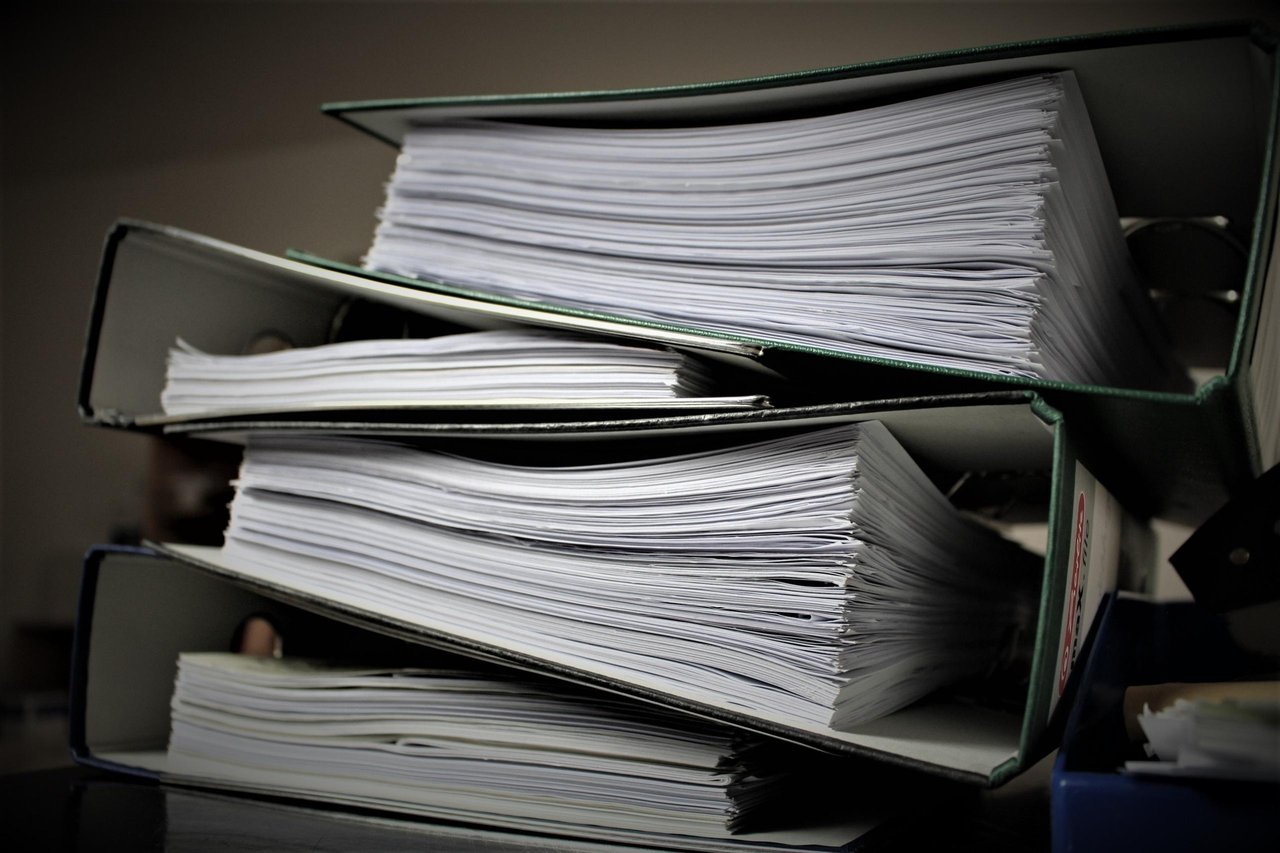Capital Projects Streamlined with Smart Contracts
By Scott Greer, Michael Matthews and Gregg Jacobson
Thousands of cubic yards of concrete, miles of wiring and pipe, and tons of steel: All of it has to be procured, tracked, delivered, installed, inspected and commissioned pursuant to the terms of the contract. This is when the costs begin to rapidly accumulate. And this is where the automation and tracking capabilities of blockchain and smart contracts can begin to shine, and save owners millions of dollars on their capital projects.
The automation and tracking abilities of smart contracts, backed by the internet of things and by blockchain, or distributed ledger, technology, have the capability to transform the legal industry. A smart contract is a software program that automates the execution of transactions required to fulfill the terms and conditions of a contract. The smart contract uses inputs of data and information that verify that the conditions have been met to execute the transaction.
An internet of things data platform captures specific data and information relating to contract execution from a wide array of sources. The data is validated and then used to execute the terms of the smart contract. A blockchain is where the transactions executed by the smart contract are recorded in an immutable data block that is replicated to each contractual party for review and consensus approval.
Using cloud-based technology, companies are established on the blockchain through a company node, and are connected to other companies through smart contracts. All the source data and calculations required to execute the transactions are recorded on a block in the blockchain, along with any contemporaneous documentation (certificates, inspection reports, pictures, drawings, specifications, etc.) necessary to substantiate the execution of the transaction.
The data block is linked to the previous block of data using a unique hash, a function that converts a sequence of letters and numbers into an encrypted output, generated when the previous block was created. The block then generates its own unique hash that is used to connect to the subsequent data block.
These hash links between blocks form an immutable blockchain of all contractual transactions. Thus, the information stored within is essentially impervious to fraudulent activities or security breaches.
In this business-to-business application of blockchain, there are no cryptocurrencies, tokens or miners. The blockchain functions as an immutable, transparent, single source of the truth, as defined by the smart contracts and agreed by the parties.
Smart contracts are now being developed for major players in the oil and gas industry by the OOC Oil & Gas Blockchain Consortium, a powerful network of 10 major oil and gas players, and for the construction industry by the Construction Industry Institute at The University of Texas as part of their Operating System 2.0 initiative, a collaborative research and development program focused on transforming how capital assets are developed and operated.
Contract Administration for Capital Projects
Historically, the administration of design and construction contracts, as well as the flow down contracts to subcontractors, vendors and suppliers, has involved labor intensive, paper-based processes executed by myriad systems and functions. As project professionals know, vast quantities of paperwork and documentation are generated during engineering, procurement, construction and commissioning activities in order to satisfy contractual requirements.
The Construction Industry Institute estimates that this administrative burden could be as high as 40% of the total installed project costs.[1] It is a hidden cost that occurs at the interfaces between companies across the project supply chain that provide material, equipment and services on any given project.
Smart contracts can significantly reduce both the cycle times and the human and technology resources required to generate, review and act upon this paperwork. This allows the project professionals to instead focus more of their efforts on engineering, procuring and constructing the project, rather than documenting it.
Smart Contracts in Capital Projects
Smart contracts directly address the inherent inefficiencies of traditional contract administration by functioning in a digital way. Prevailing business systems and work processes are paper-based, not digital.
They may have electronic forms and automated workflow, but they are simply digitizing paper-based processes required to meet contractual obligations. Consider typical project billing and payment processes with payment application, schedules of values, calculations and backup documentation all accumulated, submitted, reviewed, approved and paid as electronic (or sometimes paper) documents.
Smart contracts function based on data, not documents. Smart contracts do not replace natural language contracts that the parties and their lawyers have negotiated. They are a tool that automate the execution and administration of specific portions of a contract.
Integrated with internet of things data and blockchain technology, smart contracts verify, validate, capture and enforce agreed-upon terms between the parties. Essentially, a smart contract takes something that happens in the physical world, harvests performance related information through internet of things data (including sensors, meters, scanners, drones and other sources), automates the execution terms of a contract, and posts the results and supporting details to a block on a distributed ledger.
The information can then be reviewed through a graphical user interface that includes approvals, status, performance metrics and other dashboard information, or provided through automatic notifications when certain milestones are reached.
How It All Works
The process for developing a smart contract to work with a natural language contract is as follows. Once the scope of automation is agreed, the parties execute an addendum that specifies the scope of the smart contracts and connects the smart contract with the natural language contract.
The first step is to identify the functional requirements from the portion of the contract to be automated. Next, the data specifications (type, format, frequency, etc.) are developed, and the data sources and type of acquisition (API, export, etc.) are defined.
With the data sources and specifications identified and agreed, the parties can include requirements that anticipate any data source errors (such as upload errors, device failure, duplicate entries, data corruption, etc.) and agree on how to handle them in advance, preventing future litigation regarding missing or repeated data. After the functional requirements have been identified and documented, they are provided to a software developer to write the code for the smart contract.
After the smart contract code is developed, it is tested by the parties before it is placed into production. For each party, a company node is created on the blockchain that serves as their portal — similar to how an individual’s profile page serves as their portal into the LinkedIn network.
Company access and security controls are enforced based on unique encryption keys for each party. This controls what information the parties can access, and what actions they can perform.
For testing purposes, data is acquired from the agreed data sources and pulled into the internet of things data platform, where the data is validated and classified. The smart contract then utilizes the internet of things data to automatically execute the terms of the contract. The results are reviewed by the parties, and if they agree with the results, the smart contract is then ready put into production.
The data acquisition commences, and the transactions (source data, calculations and results) and supporting information are posted to the blockchain, ready for review and consensus by the parties. The review, consensus and handling of exceptions is facilitated by a graphical user interface and automated notices for each of the contract parties. To help with the transition to smart contracts, training is provided, as well as ongoing technical support.
One example from the oil and gas industry comes recently from the OOC Oil & Gas Blockchain Consortium, which is currently working on a proof of concept for the handling and treatment of produced water in onshore, unconventional wells. The handling and treatment of produced water is considered a relatively straightforward process with clearly defined contract terms, but there do exist some challenges with the measurement and reporting of produced, hauled and treated or disposed water and the resulting payment.
These challenges derive from manual processes for capturing and reporting water volume data between the well, the tanker truck and the treatment/disposal facility. However, many companies considered these discrepancies to be relatively minor, and they were thought to primarily be rounding errors.
By using direct data sources to capture (1) the water volume from the tank meter at the well site, (2) the volume recorded on the electronic truck ticket from the sight glass reading, and (3) the volume from the flow meter at the disposal/treatment facility, the smart contract is able to record a more accurate record of the volume of water hauled and treated. If the three volumes are within a certain tolerance, the smart contract automatically generates the invoices and initiates payments from the well operator to the water hauling contractor and the water treatment company.
After the proof of concept began, the consortium companies discovered that the discrepancies were four to five times greater than they expected. Those companies were overpaying for services to a much greater degree than they knew. The water haulage smart contract proof of concept has proven to the consortium that smart contract automation and blockchain storage results in significant savings, both in more accurate billings and more efficient invoicing and payment process.
Capital construction projects with unit rate or cost-reimbursable contracts could similarly benefit. For example, smart contracts with unit rate-based terms for items such as pipe or structural steel would utilize various digital data sources. These data sources can include reality capture scans, RFID tag location and date stamps, equipment movement, scale readings, inspection certifications and digital signatures.
The smart contract automatically validates unit progress, applies rate tables to make the billing calculation, submits the billing and receives approval and payment. Similarly, for cost-reimbursable contracts, data sources such as badge-in-badge-out, onsite geospatial personal tracking, equipment tracking or ERP systems can provide unit data (such as hours or days) and automatically extend with rates or actual, validated cost information and backup. Where a “automated” paper-based process may take as long as 60-90 days, a smart contract could perform the entire process on a daily basis.
Other examples where smart contracts enabled by internet of things and blockchain technology on capital projects can deliver significant value to all project parties include:
- Automating the material supply portions of reimbursable construction contracts by capturing tracking information during fabrication, transportation, installation and testing, and applying rates and rules of credit to calculate and execute the reimbursement for such materials;
- Capturing and storing progress data, and integrating with scheduling software such as Primavera to better and more accurately track schedule performance;
- Capturing and storing vendor drawings, operation and maintenance manuals, warranties and other documentation for equipment on the distributed ledger;
- Capturing and storing material specifications and certifications through the complete project supply chain, such as steel from the steel mill to the pipe fabricator to the contractor to operations; and
- After project turnover to the owner’s operations, storing maintenance history and change management data for each piece of critical equipment on the distributed ledger.
Conclusion
The costs of current large-scale capital projects can easily run into the billions of dollars, but the construction industry has only recently started evaluating how smart contracts and blockchain technology can streamline the project management functions for these projects. Much like the companies in the water hauling example, the construction industry has the opportunity to reduce costs and more accurately track certain activities through smart contracts integrated with internet of things and blockchain technology.
The companies that take the lead in utilizing these new technologies and making the switch from paper-based to digital contracts will be able to develop more cost-competitive projects. Those who don’t will eventually be left behind.
–
Scott A. Greer is a partner and head of the global construction transactional practice and the global energy transactional practice at King & Spalding LLP.
Michael Matthews is industry principal at Data Gumbo, a blockchain and smart contract technology company.
Gregg Jacobson is an associate at King & Spalding LLP.
The opinions expressed are those of the author(s) and do not necessarily reflect the views of the firm, its clients, or Portfolio Media Inc., or any of its or their respective affiliates. This article is for general information purposes and is not intended to be and should not be taken as legal advice.
[1] Presented by Stephen Mulva at the Construction Industry Institute Annual Conference, Aug. 7, 2019.
This article is republished with permission from Law360. The original article is available for reading here.



